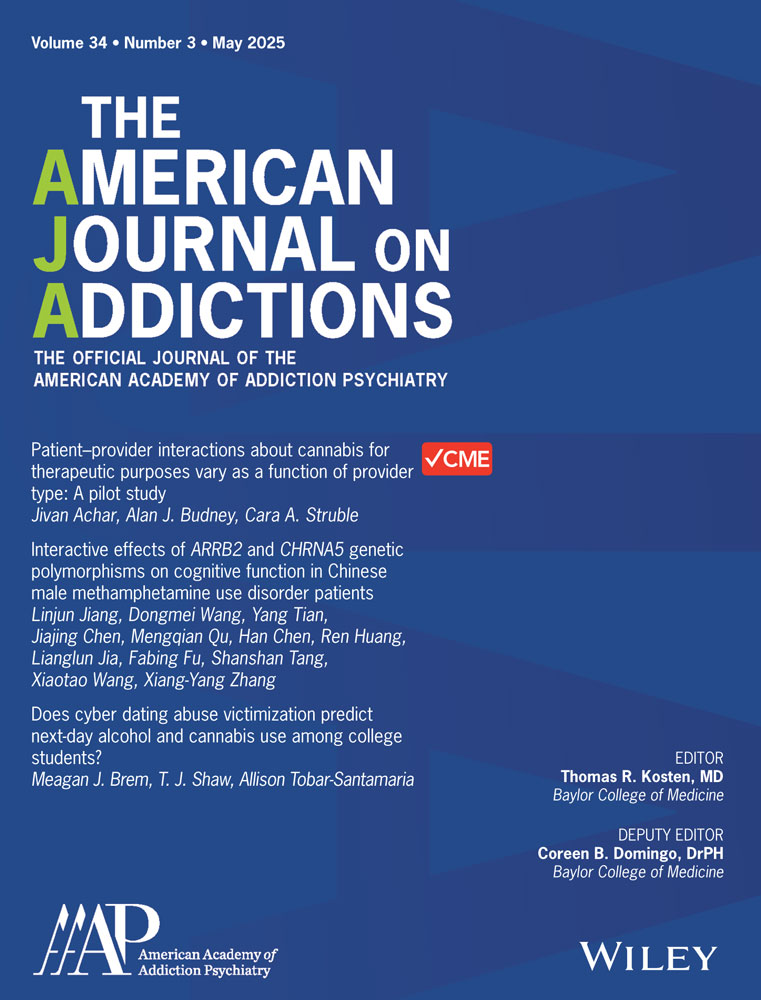Associations between big five personality dimensions and lifetime use of cannabis
Abstract
Background and Objectives
With the rise in cannabis use over the last couple of decades and shifting social views around drug use, the characterization of potential predictors for the development of cannabis use disorder (CUD) may be of high relevance for the implementation of preventive measures toward this condition. We conducted a study with the aim of analyzing possible associations between personality traits and CUD.
Methods
Our sample consisted of 1335 inpatients admitted to The Menninger Clinic between September 2016 and December 2021. All participants completed the Big Five Inventory for the characterization of their personalities. The presence of a diagnosis of CUD and other substance use disorders was established through the administration of the Structured Clinical Interview for DSM-5 (SCID-5). Patients with and without a lifetime diagnosis of CUD were compared with regard to their scores in the five personality dimensions. We utilized analysis of covariance for the statistical inference, with age, sex, and use of other substances as covariates.
Results
Our findings revealed that low conscientiousness, low agreeableness, and high open-mindedness were associated with the presence of CUD. The relationships between CUD and the remaining personality dimensions explored (extraversion and neuroticism) were not statistically significant.
Conclusions and Scientific Significance
This study indicates that certain personality dimensions are potential predictors for the risk for developing CUD. An inpatient population was sampled for this study, allowing for the comparison with other community-based studies. These findings have important preventative and treatment implications from a clinical and research standpoint.
CONFLICT OF INTEREST STATEMENT
The authors declare no conflicts of interest. The authors alone are responsible for the content and writing of this paper.




